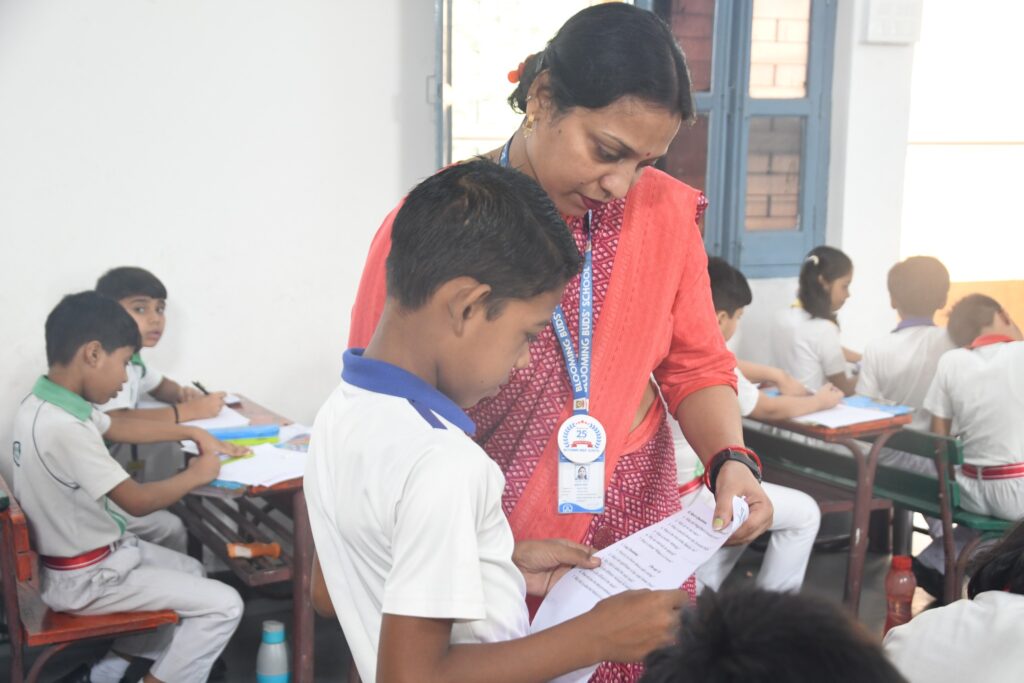Teaching is both an art and a science, and the effectiveness of any teaching method relies heavily on the teacher’s ability to connect with students and inspire learning. While there are many different approaches to teaching, certain strategies have been proven to engage students, enhance understanding, and foster critical thinking. Below are some of the best methods that can make a significant difference in the classroom:
1. Active Learning: Engaging Students in the Process
Active learning is a dynamic teaching method that emphasizes student participation. It is based on the idea that students learn best when they are actively involved in the learning process, rather than passively receiving information. This method includes activities like group discussions, problem-solving tasks, case studies, debates, and hands-on experiments.
Why It Works:
- Encourages collaboration and communication
- Promotes deeper understanding through critical thinking
- Allows students to apply theoretical knowledge in practical situations
How to Implement:
- Use small group activities where students can share and discuss ideas.
- Integrate real-world scenarios or problems that require students to apply knowledge.
- Ask students to teach or explain concepts to their peers, reinforcing their understanding.
2. Differentiated Instruction: Tailoring Learning to Individual Needs
No two students learn in exactly the same way, and differentiated instruction acknowledges these differences by adapting teaching strategies to accommodate varying learning styles, strengths, and weaknesses. This approach involves providing multiple avenues for students to access content, engage with it, and demonstrate their learning.
Why It Works:
- Meets the diverse needs of students, ensuring no one is left behind
- Helps students succeed at their own pace and level
- Increases motivation by addressing individual interests and learning preferences
How to Implement:
- Offer multiple formats for learning, such as visual aids, hands-on activities, and digital resources.
- Adjust the level of complexity in assignments based on the students’ abilities.
- Provide choices for assignments, such as written reports, presentations, or creative projects, allowing students to demonstrate their strengths.
3. Inquiry-Based Learning: Encouraging Curiosity and Exploration
Inquiry-based learning involves guiding students to explore questions, issues, and problems that spark their curiosity. Instead of just giving them answers, this method encourages students to ask questions, research, experiment, and draw conclusions on their own.
Why It Works:
- Fosters critical thinking and problem-solving skills
- Encourages a sense of ownership over learning
- Develops a lifelong love of learning and intellectual curiosity
How to Implement:
- Present open-ended questions or problems for students to explore.
- Encourage students to conduct research, gather data, and test hypotheses.
- Create opportunities for students to share their findings and reflect on the process.
4. Flipped Classroom: Shifting the Focus from Teacher to Student
The flipped classroom model turns traditional teaching on its head by reversing the typical structure of learning. Instead of using class time for lectures, students first engage with instructional content at home, typically through videos, readings, or online lessons. Then, in class, they participate in collaborative activities that reinforce the content, allowing teachers to provide more individualized support.
Why It Works:
- Maximizes class time for active learning and collaboration
- Encourages independent learning and self-paced study
- Allows for deeper exploration of topics during class time
How to Implement:
- Provide video lectures, readings, or interactive lessons for students to review at home.
- Use class time for discussions, group work, problem-solving, and application of knowledge.
- Use formative assessments to check for understanding and guide classroom activities.
5. Project-Based Learning (PBL): Real-World Learning Experiences
Project-based learning emphasizes the creation of tangible outcomes, such as reports, presentations, or physical products, to solve real-world problems. This approach enables students to develop skills such as collaboration, critical thinking, and time management while working on projects that are meaningful and relevant to their lives.
Why It Works:
- Encourages students to think critically and creatively
- Prepares students for real-life challenges and problem-solving
- Promotes teamwork and accountability
How to Implement:
- Assign long-term projects that require students to work in teams or individually.
- Connect projects to real-world issues or challenges, making them relevant and meaningful.
- Offer periodic checkpoints to monitor progress and provide feedback.
6. Gamification: Making Learning Fun and Engaging
Gamification applies game-like elements to the learning process, such as rewards, levels, challenges, and competition. By incorporating these features into lessons, students become more engaged and motivated to complete tasks and achieve learning goals.
Why It Works:
- Increases student engagement and motivation
- Turns learning into an enjoyable and rewarding experience
- Encourages healthy competition and collaboration
How to Implement:
- Use points, badges, or leaderboards to track progress and celebrate achievements.
- Incorporate quizzes, challenges, and team-based activities into lessons.
- Design educational games that align with course content to reinforce learning.
7. Constructivist Teaching: Building on Prior Knowledge
Constructivism is based on the principle that students build their own understanding of the world based on experiences and prior knowledge. This teaching method emphasizes active engagement, where students construct meaning by connecting new information with what they already know.
Why It Works:
- Encourages students to actively create their own knowledge
- Promotes deeper learning and long-term retention
- Allows students to make connections between classroom learning and the real world
How to Implement:
- Encourage students to draw on their own experiences to solve problems.
- Use scaffolding techniques, gradually increasing the complexity of tasks as students’ understanding deepens.
- Foster a classroom environment where mistakes are seen as learning opportunities.
Conclusion
Effective teaching is not about using a single method, but about combining approaches that best meet the needs of the students. Active learning, differentiated instruction, inquiry-based learning, flipped classrooms, project-based learning, gamification, and constructivism all provide unique benefits and can be used in tandem to create a rich, engaging, and inclusive learning environment. By implementing these methods thoughtfully, educators can inspire students to become critical thinkers, problem solvers, and lifelong learners.
Ultimately, the best teaching method is one that adapts to the needs of students, encourages their curiosity, and fosters a passion for learning.


